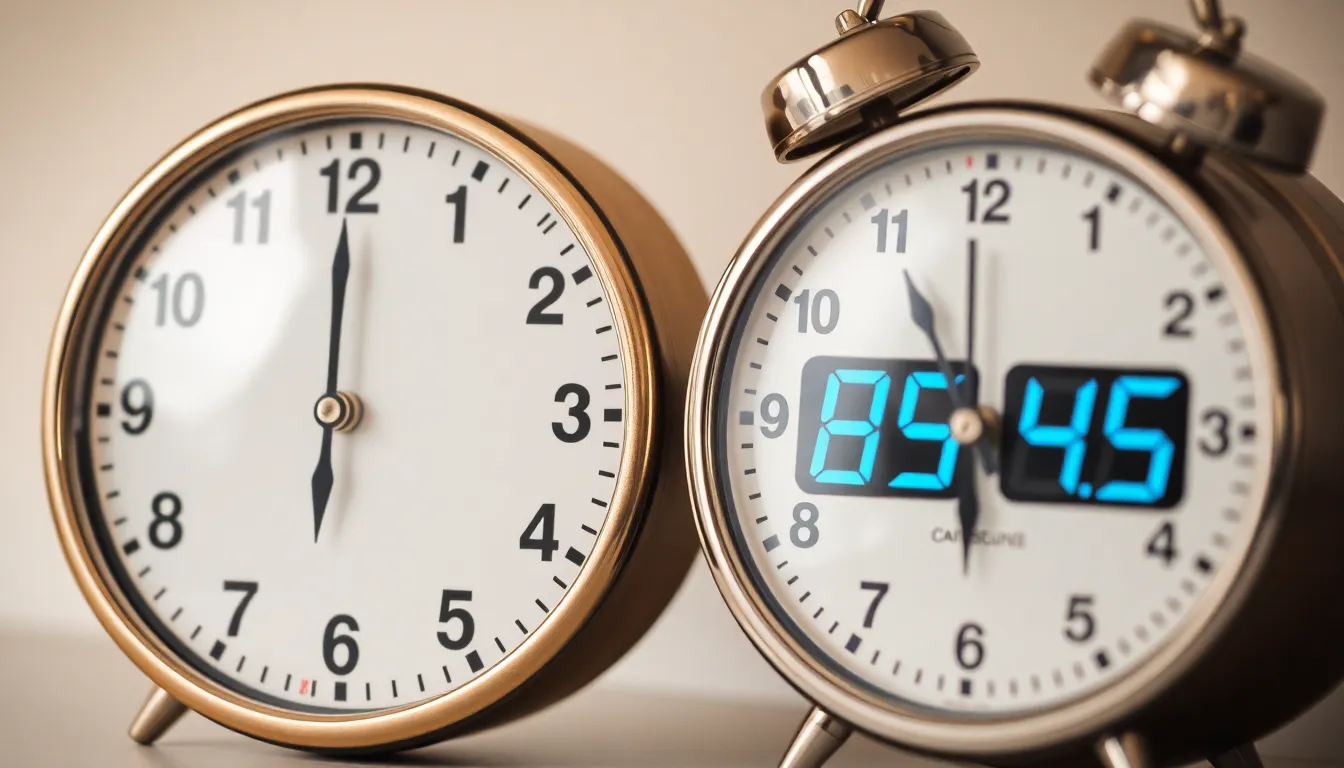Time can be a tricky little devil, especially when you’re waiting for that magical moment to arrive—like 7:30. Whether it’s the start of your favorite show or the moment you can finally kick off your shoes and relax, knowing how long you’ve got left can make all the difference.
Table of Contents
ToggleUnderstanding Time Calculations
Time plays a crucial role in daily life and affects experiences significantly. Knowing how to calculate time helps improve anticipation and manage activities effectively.
The Concept of Time
Time represents a structured way to measure changes and events. Clocks display hours and minutes, allowing for precise scheduling. Understanding concepts like seconds and minutes enables individuals to estimate durations accurately. For example, he or she can determine how long it takes to get ready or commute. Knowing current time aids in planning for upcoming events and enhances overall time-related decisions.
Importance of Time Management
Effective time management increases productivity and reduces stress. Prioritizing tasks ensures that essential activities are completed promptly. Setting specific deadlines helps individuals remain focused and accountable for their responsibilities. For instance, a student can allocate hours for studying, ensuring preparation for exams. Balancing work and leisure requires careful allocation of time, leading to a healthier lifestyle overall.
Methods to Calculate Time

Calculating the time remaining until a specific moment, like 7:30, involves simple techniques using various types of clocks. Understanding these methods aids in better time management.
Using Analog Clocks
Reading an analog clock consists of observing the hour and minute hands. Recognizing that each hour contains 60 minutes helps to determine the remaining time until 7:30. For instance, if the time reads 6:15, the calculation starts with the hour hand nearing seven and the minute hand at 15 minutes. That means 1 hour and 15 minutes remain until 7:30, making it clear how to measure that duration effectively.
Utilizing Digital Clocks
Digital clocks provide a straightforward way of telling time with numeric displays. Often, these devices show the time in hours and minutes, making calculations quicker. To determine how long until 7:30, one simply compares the current time against 7:30. If the clock shows 6:45, subtracting 6:45 from 7:30 indicates 45 minutes remain until the target time. This method ensures accuracy and simplicity, perfect for managing daily schedules.
Practical Applications
Understanding time helps in various daily scenarios, allowing individuals to make the most of each moment. Knowing how long until 7:30 aids in organizing tasks effectively.
Planning Your Day
Effective planning begins with time awareness. Individuals can allocate specific time slots for work, errands, and relaxation. Recognizing the remaining time until 7:30 allows for adjusting activities as needed. If it’s currently 3:00, one can conveniently schedule a meeting or complete chores before the afternoon turns into evening. Setting goals around this hour promotes productivity, making it essential to know how long is left until that time frame.
Meeting Deadlines
Meeting deadlines significantly benefits from time calculations. As an example, if a project is due at 7:30, knowing the hours and minutes remaining creates a sense of urgency. A person can assess the current time, plan their workload accordingly, and prioritize high-impact tasks. If it’s 6:00, there’s an hour and a half to finalize work. Focusing efforts on what matters most before reaching the deadline can enhance outcomes and reduce stress levels. Keeping track of time encourages accountability and better results in both personal and professional environments.
Common Time-Related Questions
Understanding time can enhance daily experiences. Individuals often seek clarity on various aspects related to time management and awareness.
How to Estimate Approximations
Estimations play a crucial role in time awareness. By rounding the current hour to the nearest half or full hour, individuals can quickly approximate remaining time. For example, if it’s 6:20, estimating that about an hour remains until 7:30 offers a practical view. Rounding also simplifies interactions with schedules by making it easier to factor in breaks or additional tasks. Engaging in this practice frequently improves overall time efficiency.
Tips for Time Awareness
Maintaining awareness of time involves strategic planning. Setting reminders a few minutes before deadlines helps reinforce priorities. Using timers provides clear indications of remaining time for tasks. Observing the clock regularly cultivates a habit that prevents last-minute rushes. Engaging in regular self-checks allows individuals to assess their progress and adjust accordingly. Prioritizing essential tasks ensures efficient use of available time.
Understanding how long until 7:30 can significantly enhance daily experiences and improve time management. By mastering time calculations individuals can better organize their tasks and maximize productivity. Whether using analog or digital clocks the ability to accurately gauge remaining time fosters a sense of urgency and prioritizes essential activities.
Incorporating time awareness into everyday life not only promotes accountability but also leads to a healthier lifestyle. With effective planning and the right techniques individuals can transform waiting periods into opportunities for accomplishment. Embracing these practices will ultimately lead to more fulfilling and stress-free days.








